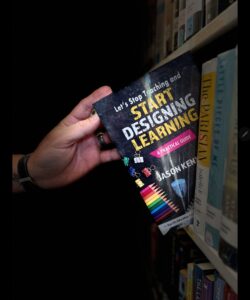The image of a learner sitting in a classroom, head down, shoulders slumped—silent and unseen—is one that should break all of our collective hearts. Teaching, at its best, isn’t about content or tests or standards; it’s about connection. Without belonging, no amount of rigor or pedagogy will matter because learning doesn’t happen when a child feels like an outsider. Belonging isn’t only foundational. It is the bridge to every other layer of learning.
Why Belonging Comes Before Learning
When learners don’t feel they belong, their brains go into survival mode. That’s not metaphorical—it’s science. Maslow’s Hierarchy of Needs reminds us that before learners can reach the levels of learning and achievement, their fundamental psychological needs must be met: safety, connection, and belonging. Neuroscience adds weight to this. Feeling excluded activates the same parts of the brain that process physical pain. Think about that: the experience of being left out hurts learners, mentally and physically, and the consequences ripple across their performance, behavior, and emotional well-being.
In classrooms where belonging is absent:
- Learners hide in compliance, avoiding risk or participation.
- Others act out, masking fear with disruption.
- The quietest learners slip through the cracks, invisible to even the most well-meaning educators.
And we, as educators, often mistake this for other things—laziness, lack of motivation, or defiance. The truth is, these are symptoms, not causes. A learner who feels they don’t belong has no reason to try. Why would they? The classroom isn’t their space.
Belonging changes that. When a learner knows they are seen, accepted, and valued, something shifts. They start to lean in. They take risks. They share ideas. The learner who once seemed “checked out” begins to show up—not just physically, but mentally and emotionally.
Educators may ask, “But how do we foster belonging?” The answer lies in intentionality:
- Building trust, one interaction at a time.
- Listening more than we talk.
- Showing learners they are seen—not as grades or behavior issues, but as people.
It’s asking about their weekend. It’s knowing who plays in the band, who loves science fiction, and who dreads lunch alone. It’s small, steady choices that tell learners: You matter here. If learners feel connected to us, and to each other, they are far more likely to engage, persist, and succeed.
Belonging is not a one-time event. It’s not a singular “moment.” It’s a culture we intentionally design every day so that learners enter our classrooms and think, This is my place. I belong here.
“I See You”
I’ll never forget a quiet middle school learner I taught—let’s call him Marcus. Marcus rarely participated, and he often wore a hoodie that practically swallowed him. Teachers called him “shy,” but I knew something more lingered beneath the silence. I started small: calling him by name as he entered, asking for his thoughts, even when his hand wasn’t raised.
One afternoon, I passed him a note during some independent work: “Your thoughts matter. I’d love to hear what you think about what we learned today when you’re ready.” That was it. No public praise. No forced participation. Just one private affirmation.
It took a week, but Marcus came to me after class with a crumpled slip of paper: his thoughts—raw and insightful—about the learning. That was the beginning of his voice. From there, Marcus began showing up—really showing up—as if, finally, he believed the classroom was his space, too.
Belonging is about moments like that. It’s about signaling to learners, in subtle ways: I see you. You belong here.
In classrooms where educators prioritize belonging, the results are measurable and powerful:
- Engagement improves: Learners take ownership of their learning.
- Behavioral disruptions decrease: Boredom and frustration give way to curiosity and participation.
- Achievement grows: Learners push themselves further when they feel safe to fail and supported to succeed.
Research backs this shift. In classrooms where belonging is intentionally fostered, academic outcomes soar, and learners develop a sense of confidence that extends far beyond the walls of a school.
Design for Belonging
To make belonging visible, educators must design for it, just as we design learning. It doesn’t happen by accident. Here’s how:
1. Be the Lead Learner
- Share your story. Vulnerability breeds connection. Let learners see your humanity—your struggles, quirks, and passions.
- Normalize mistakes. Design learning where failure is part of the process. No one is left out because everyone fails together and rises together.
2. Build Relational Rituals
- Start every class with an inclusion ritual: a quick check-in, greeting, or community-building activity.
- Use names—correctly, intentionally, and frequently. Hearing their name in a positive way reinforces identity.
3. Elevate Learner Voice
- Ask learners how they want to be seen. What do they care about? What brings them joy? We design better learning when we know these answers.
- Make learning collaborative. Connection grows through teamwork and dialogue.
A Classroom Where All Feel Seen
Imagine classrooms where every learner knows they are welcome as they are. Where their voice matters, their identity is honored, and they feel part of something bigger than themselves. Belonging is not just a nice idea; it is the foundation of everything else.
The truth is, as educators, we are architects of belonging. We set the tone, design the culture, and build the bridge that connects learners to each other and their learning. If we get this right—if we commit to seeing every child, not just teaching them—then we won’t have to hope for learning to happen. It will flow, naturally, from a place of connection and trust.
Because when learners know they belong, they’ll risk showing up—and when they show up, everything changes.


